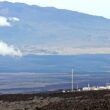Not all climate models are created equal
By Claudia Tebaldi, December 6, 2007
It's exhilarating to see the fruits of climate research achieve such prominence in the media, political debate, and concerns of industrial and municipal stakeholders. As scientists, though, it's incumbent upon us not to mislead the lay audience by blurring the line between methodological investigation and end products ready for consumption.
I should begin by disclosing that as a former project scientist at the National Center for Atmospheric Research, I was tasked with thinking about how to combine data from different climate models into probabilistic projections of regional climate change. This notwithstanding, I wholeheartedly agree with Gavin that these kinds of probabilistic projections aren't appropriate for risk analysis and decision making under uncertainty and won't be for a long time.
The ideal scenario in climate modeling is a situation where all the models are equally good: They each account for all the physical and chemical processes we deem necessary to describe Earth's climate; they all perform satisfactorily down to the finest resolved scale (currently, we have more confidence in the behavior of these models at the continental scale than at the local scale); and we have enough observed data (from climate records, ice-core samples, volcanic eruptions, and other natural phenomena) to prove that their simulations are consistent with what the real experiment (i.e., climate on Earth) is showing us. At that point, we could take the models' projections at face value, weigh the results of every model equally, and use their range to bracket our uncertainty, at least under a given emissions scenario. I'd also be out of a job. Luckily for me, we're far from that point.
As a statistician, I attempt to make sense of multiple models with a probabilistic treatment, which weighs models differently based on their different performances. Say I have data on average precipitation for the last 30 years in the Southwest United States, as well as simulations from 20 different climate models of current and future precipitation in the same region, and I want to know what the expected change in precipitation will be at the end of this century under a specific emissions scenario. I can try to account for the fact that the different models have shown different skill in simulating current precipitation. I can try to formalize the idea that model consensus is generally more reliable than individual predictions. Ideally, I can factor in the similar basic design of all the models and look at other experiments carried out with simpler models or perturbed parameterization to gauge the reliability of their agreement when compared with alternative modeling choices.
Although challenging, and, at present, only at the stage of methodological inquiry, there's value in interpreting what multiple models produce by trying to assign them probabilities. The alternative is that people will use ensemble averages and ensemble standard deviation as a measure of uncertainty. These quantities are reassuring because they can be easily explained and understood. But when I compute a mean as my estimate and a standard deviation as its uncertainty, I'm assuming that each model is producing independent data, and I'm relying on the expectation that their errors will cancel each other out.
More complicated is a probability distribution function, which characterizes the range of possible outcomes, assigning relatively higher or lower probabilities to subintervals, and may distribute the probability asymmetrically within the range. Such analysis is also more informative, but should I go as far as offering the results to the water managers in Southern California so they can think about future needs and policies for water resource management?
I wouldn't offer my probabilistic projections as a definite estimate of the area's expected temperature or precipitation; not in the same way the National Oceanic and Atmospheric Administration could, until recently, provide the public with "climate normals" based on a large sample of observed records of a supposedly stationary climate. It would be deceiving to present these estimates as having the same reliability that's needed to make structural decisions about designing a floodplain, bridge, or dam.
I think, though, that there's valuable information in a "conditional probability distribution function" if that's the best representation of the uncertainty given the data we have nowadays. The caveat is that the range of uncertainty is likely to be larger than what we see in models, which typically use conservative parameterizations. Additionally, we don't know which emissions scenario will occur over the next decades, further widening the potential realm of possible climate outcomes.
Meanwhile, in the real world, I would echo Gavin: Many decisions can be made by looking at qualitative agreement, general tendencies, and model consensus without the need for quantitative description of the uncertainties. Temperatures are warming; heat waves will intensify; sea level is rising; and arid regions will dry further. So planning for worst-case scenarios is only prudent.
Helping vulnerable populations access aid centers in the case of extreme heat events, dissuading construction on coastlines, conserving water resources, and developing drought-resistant crops are adaptation measures we should pursue regardless of the exact magnitude of the changes in store for us.
Share: [addthis tool="addthis_inline_share_toolbox"]














